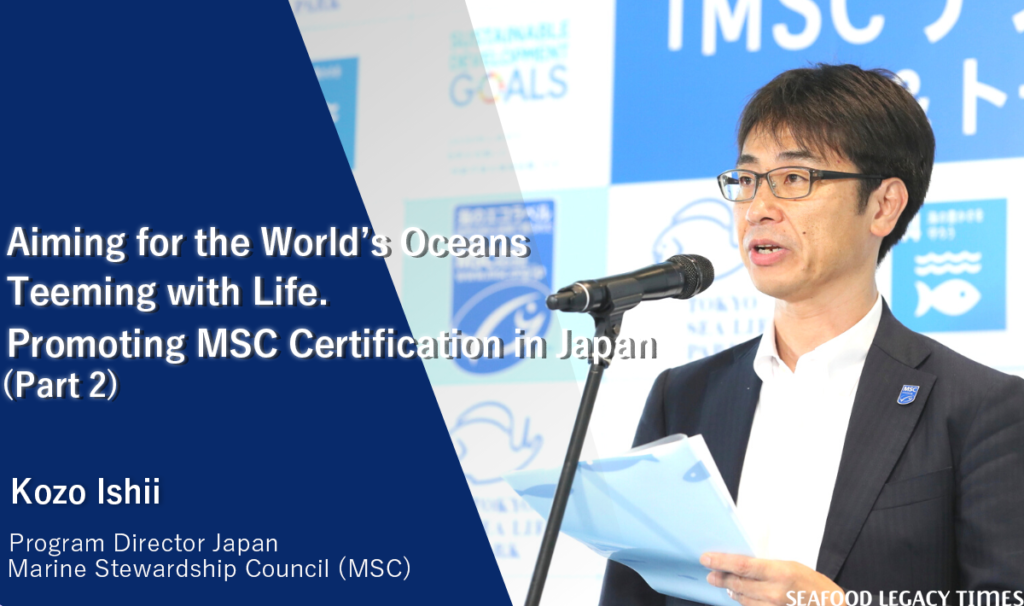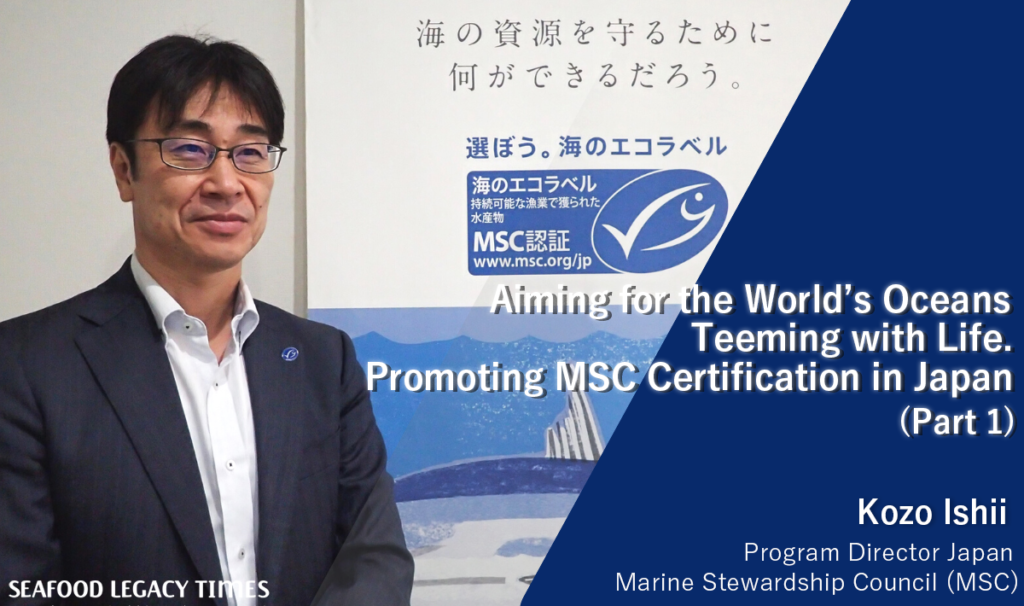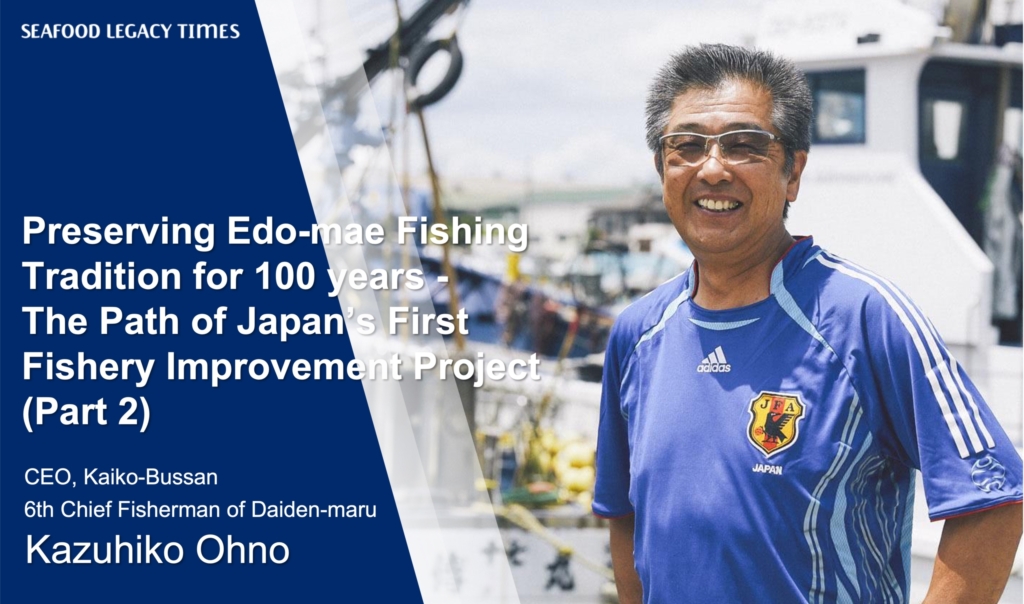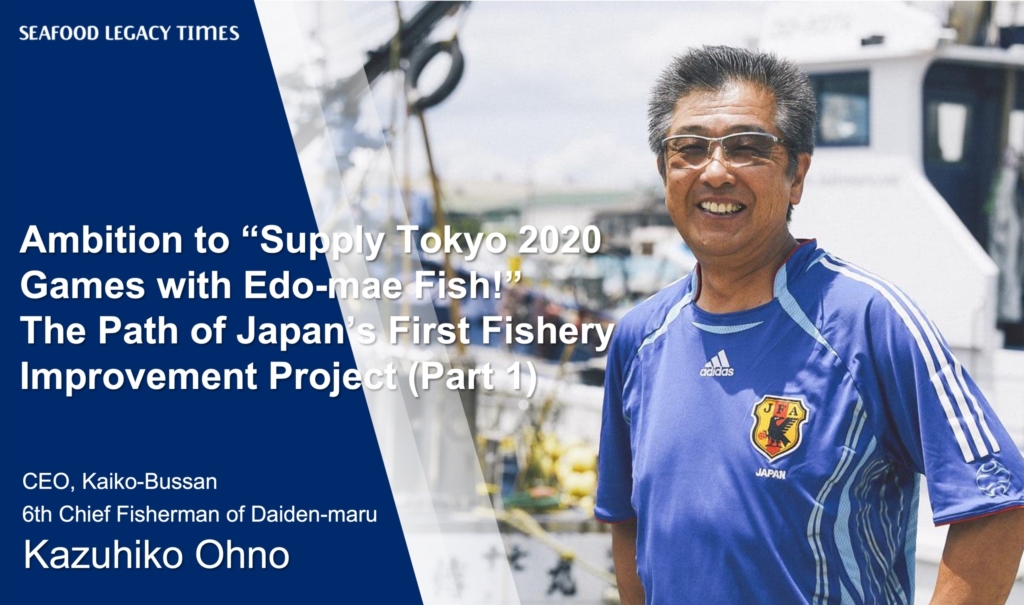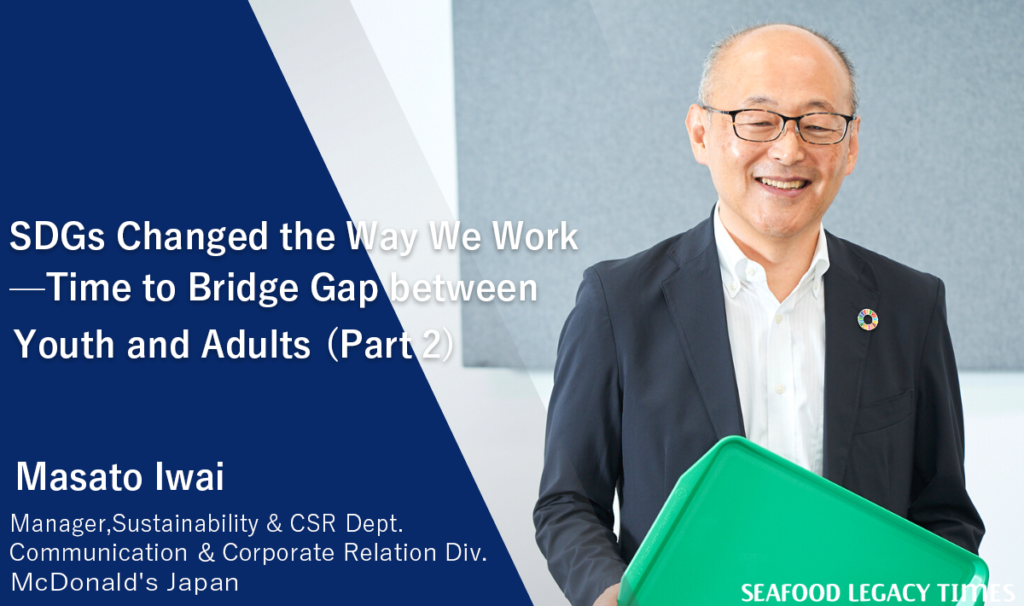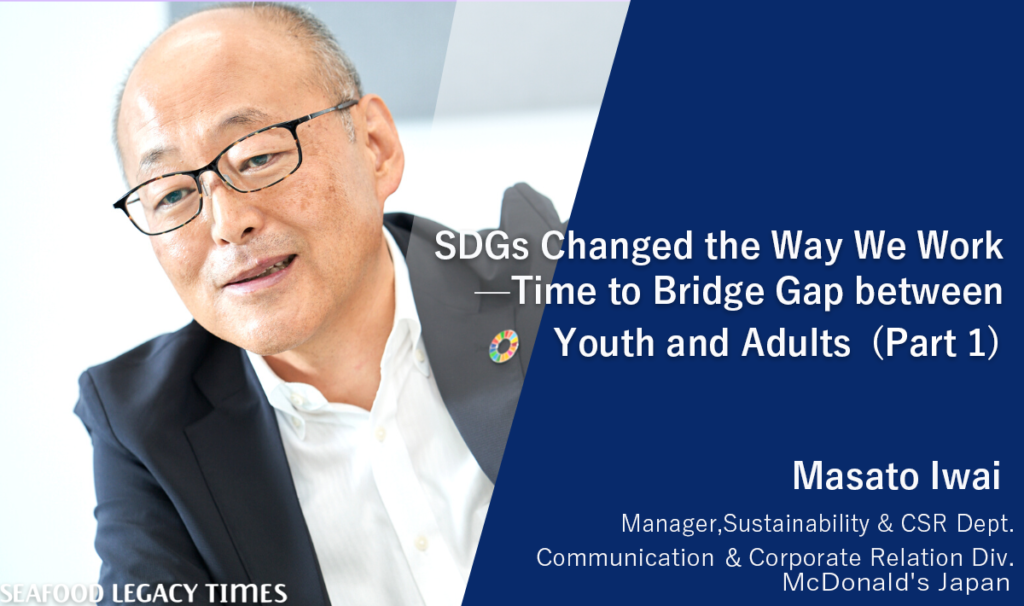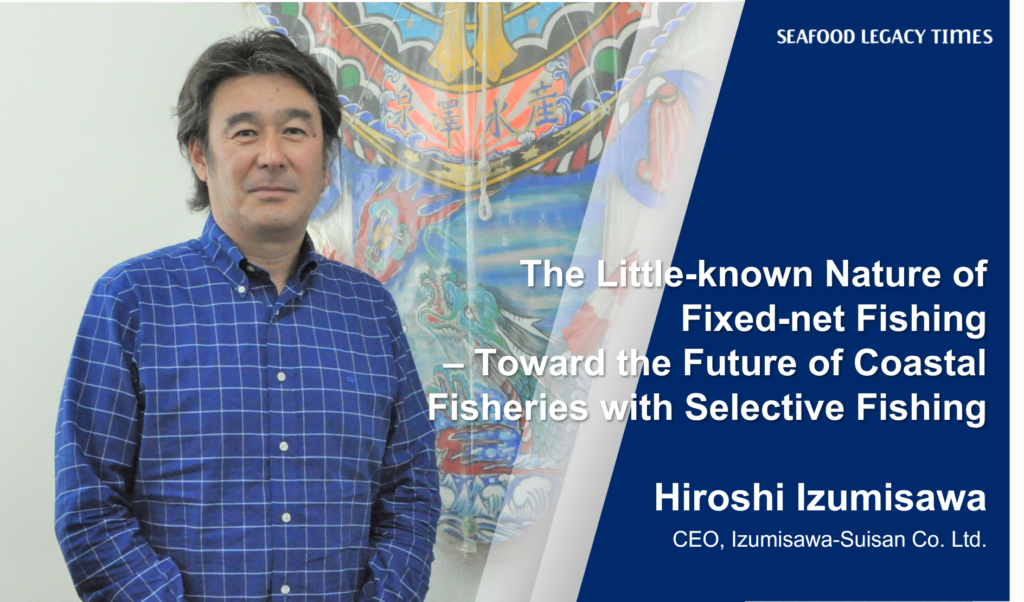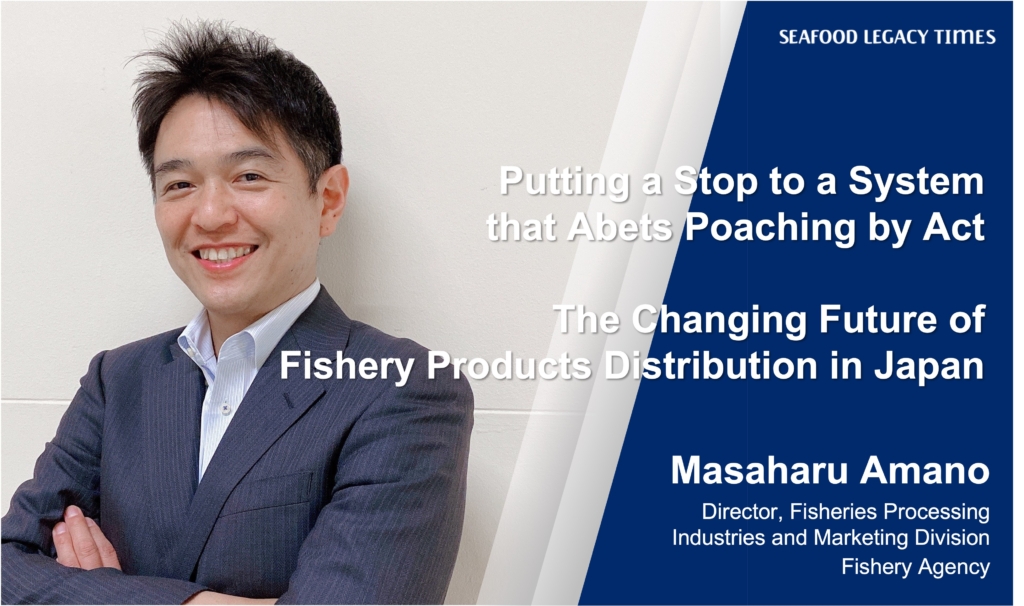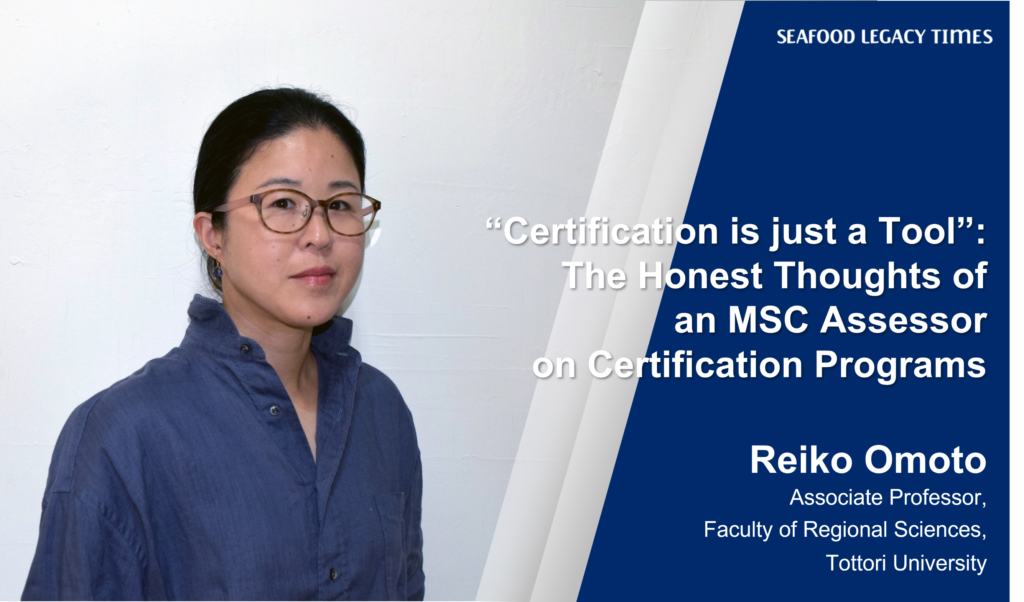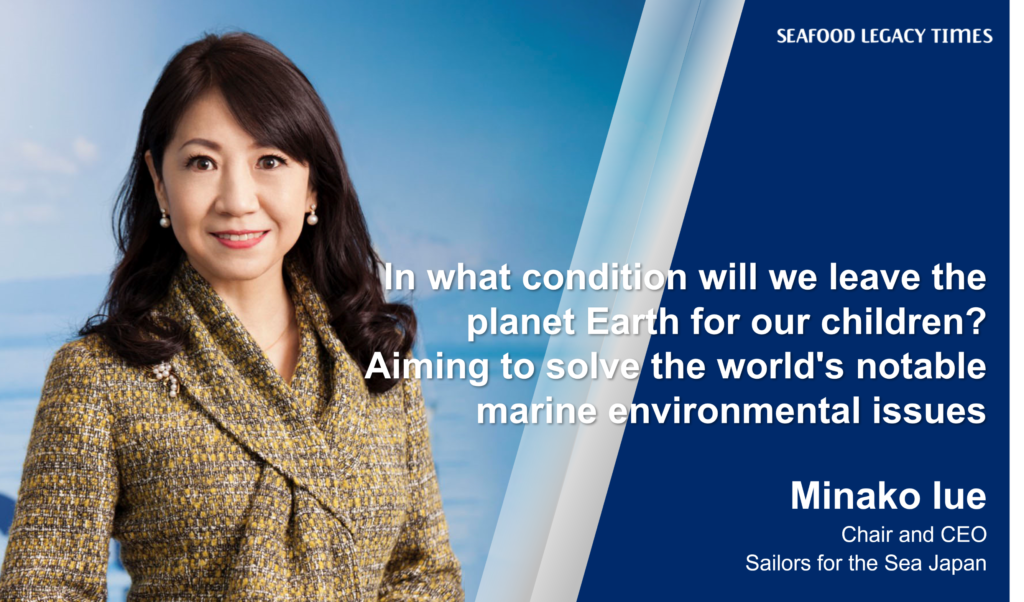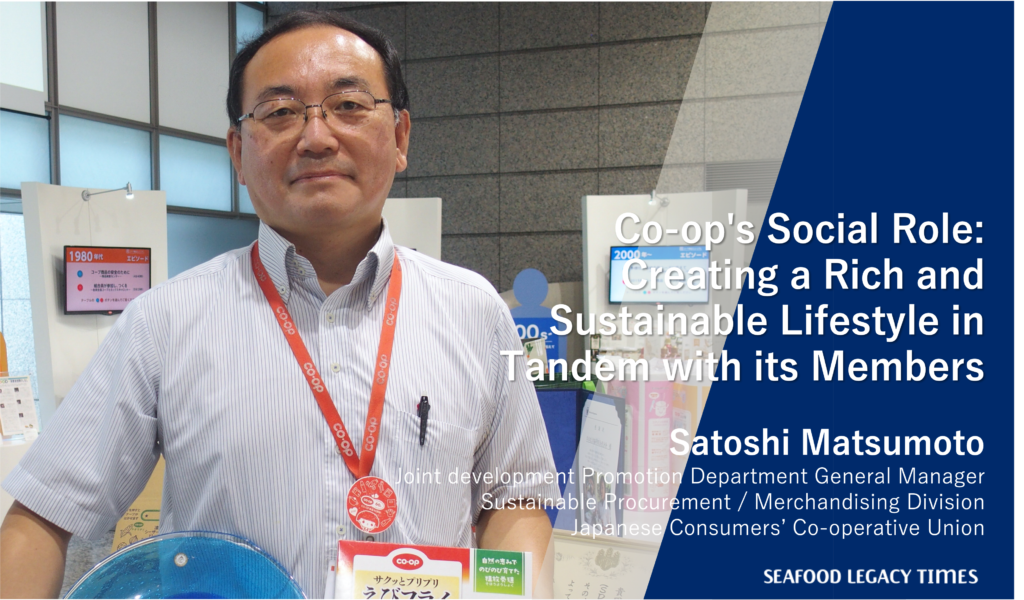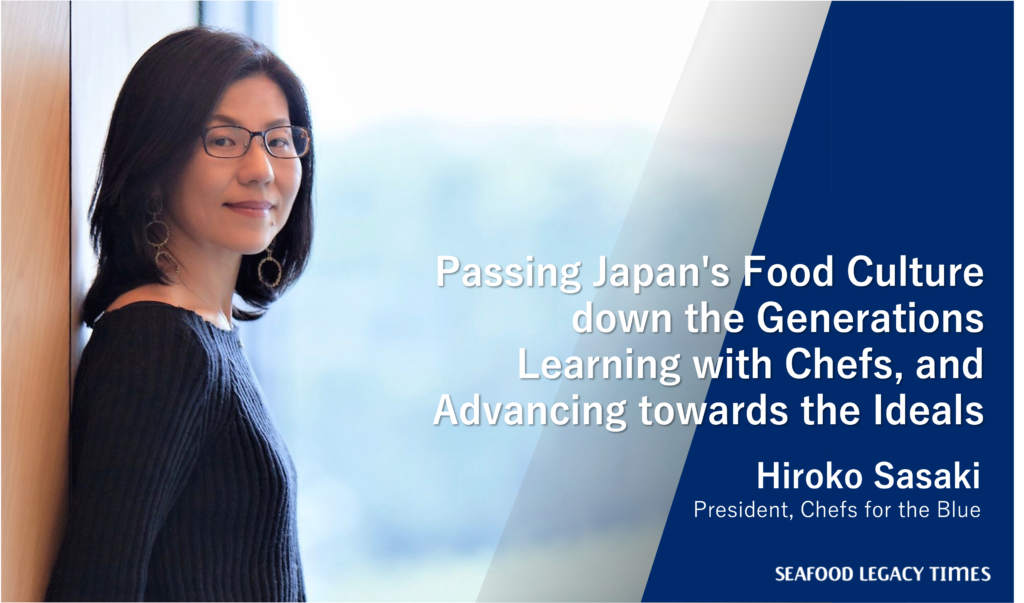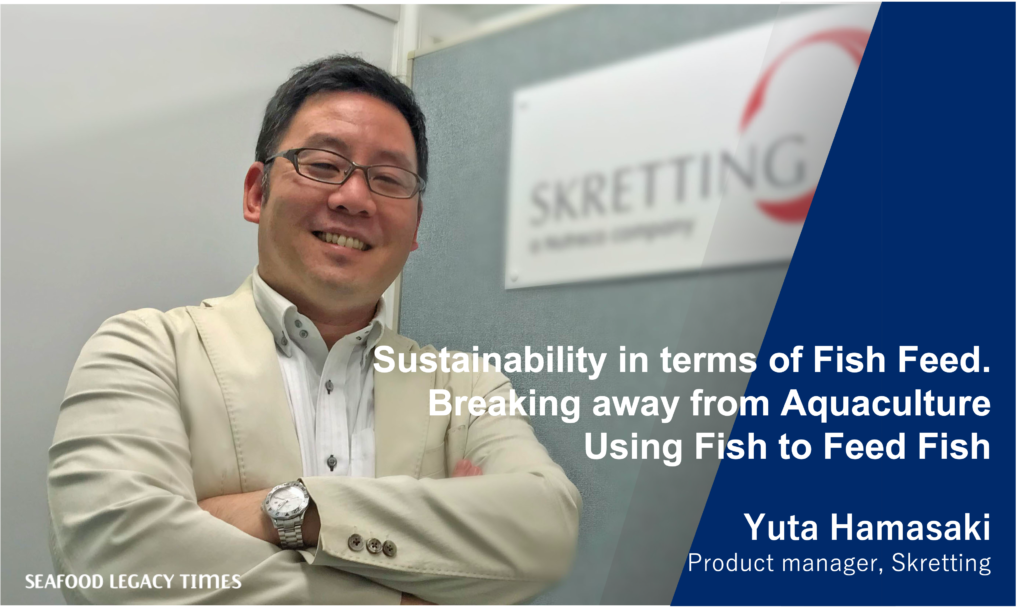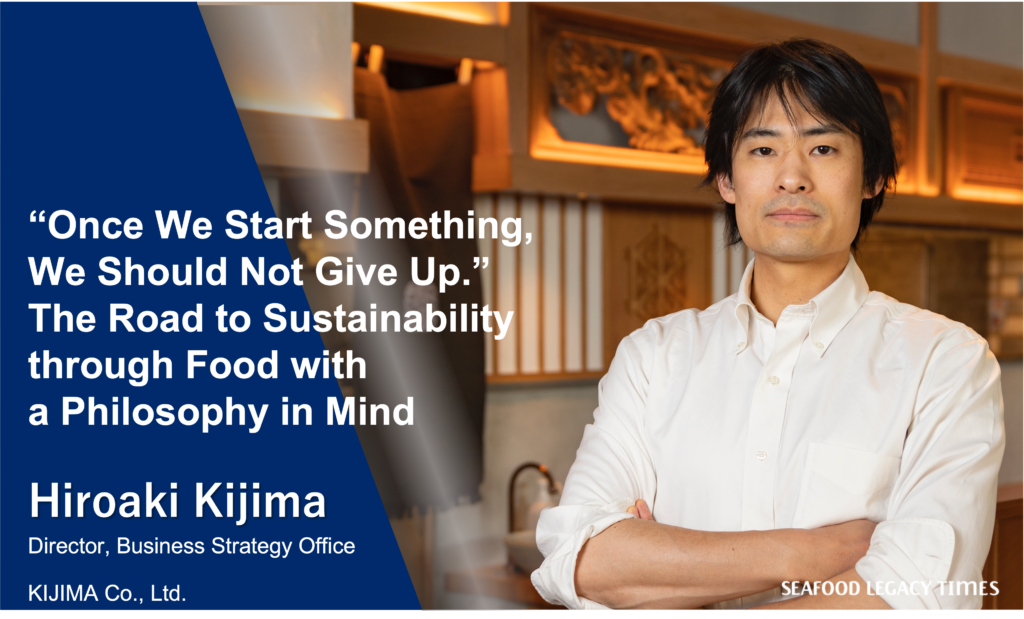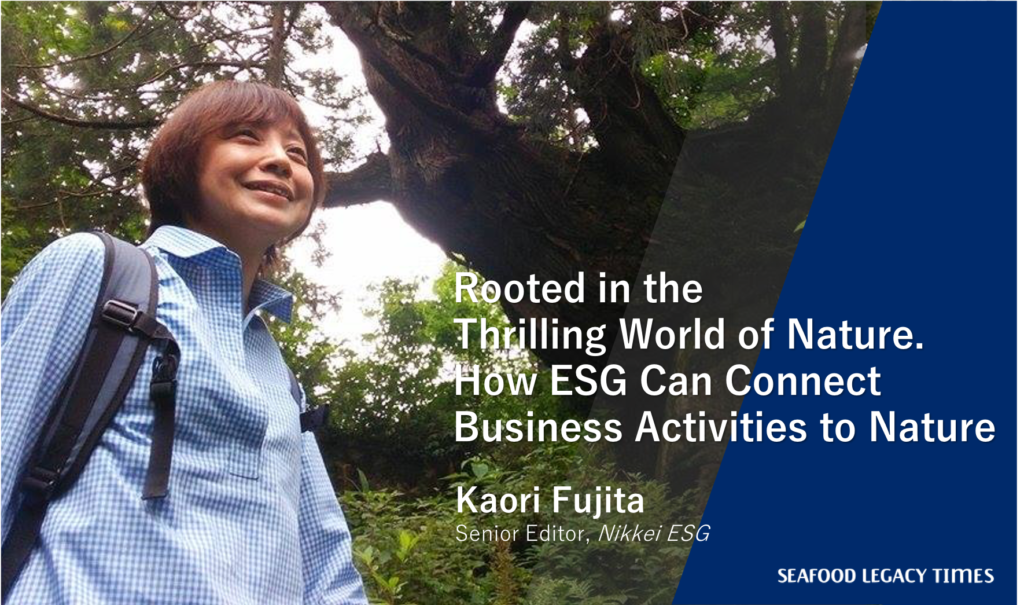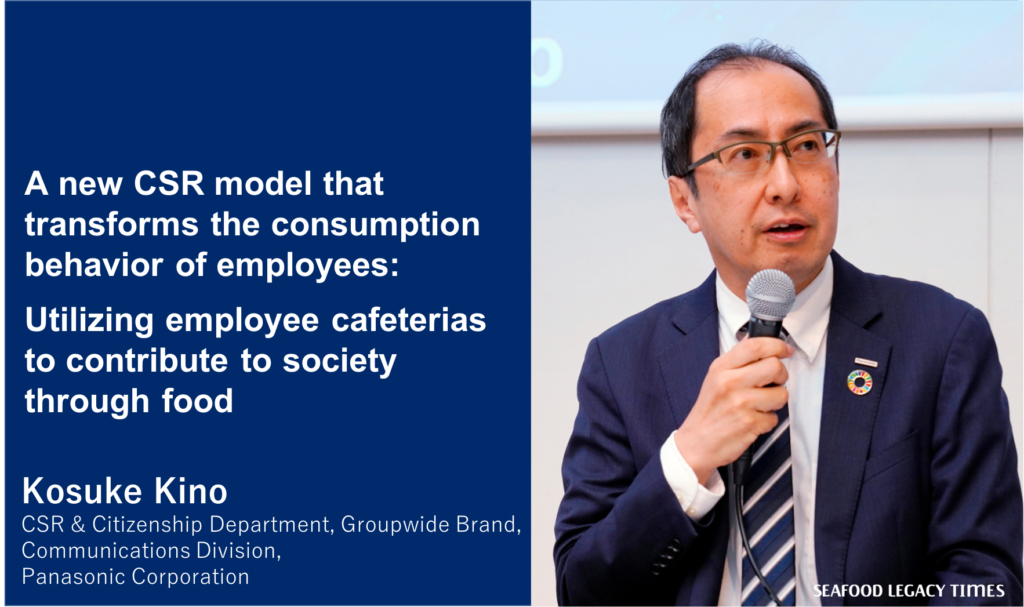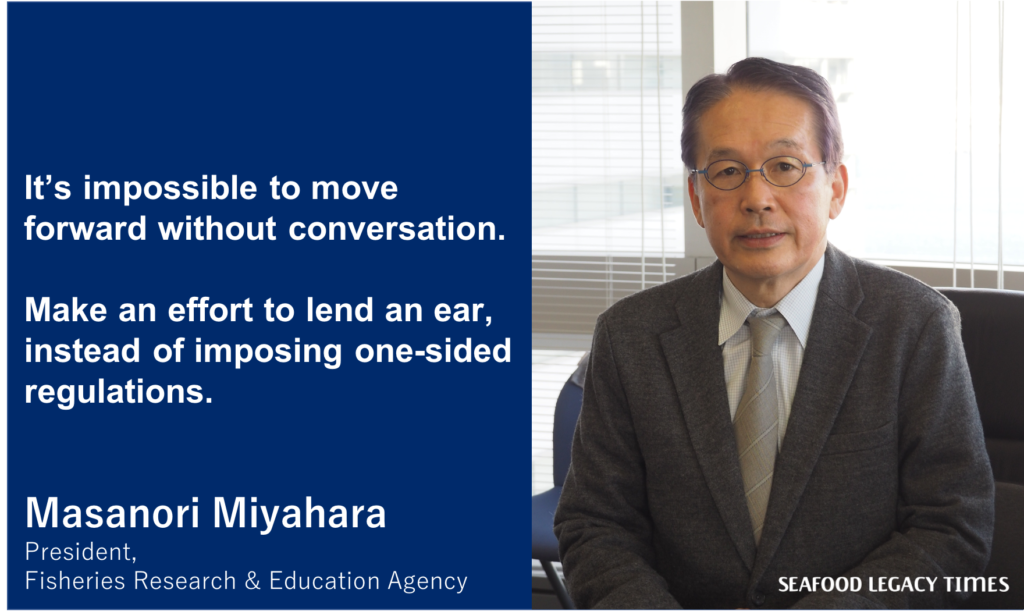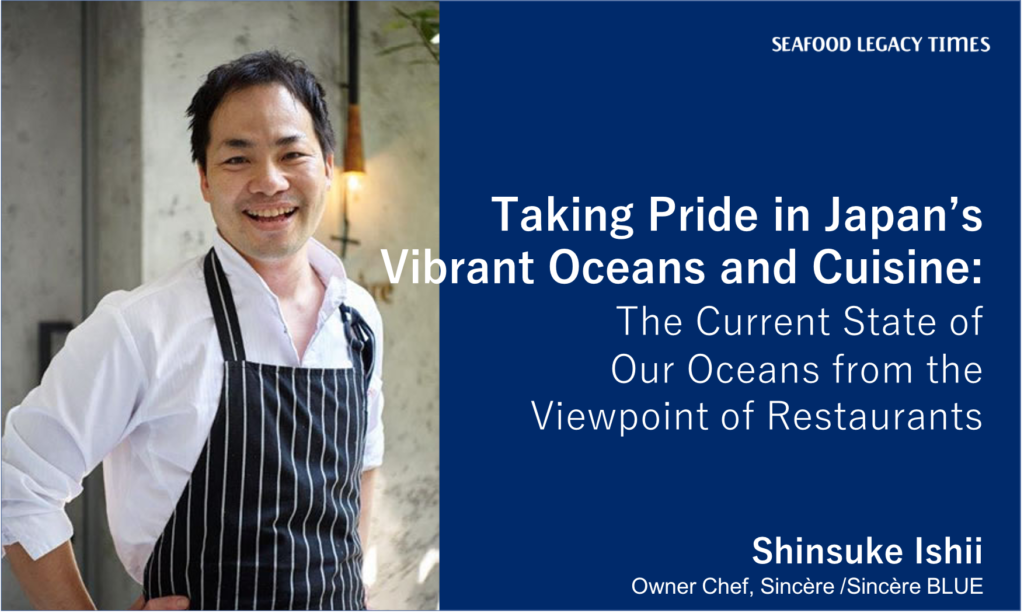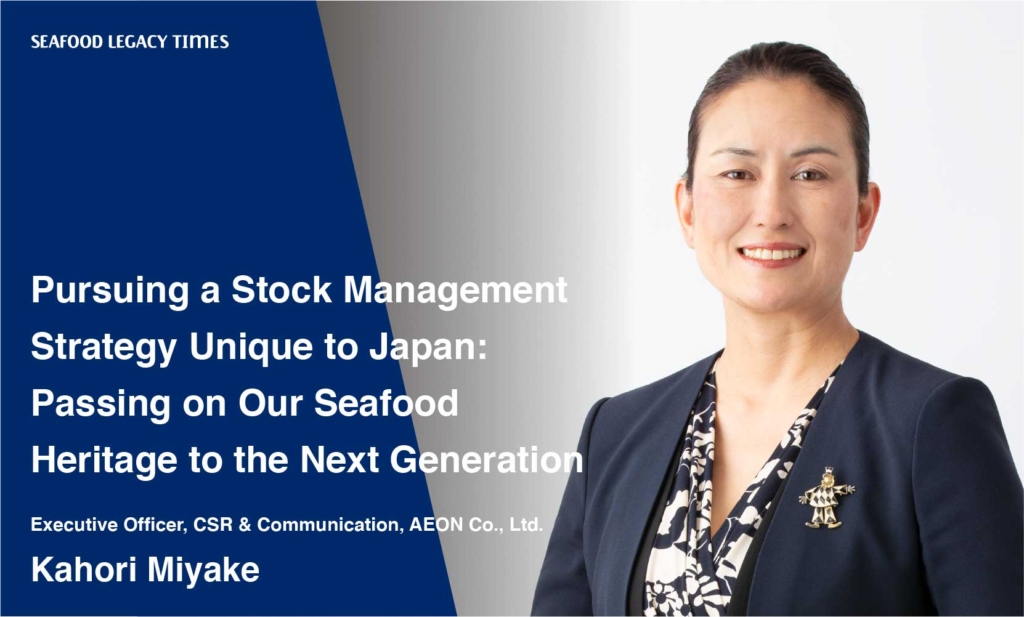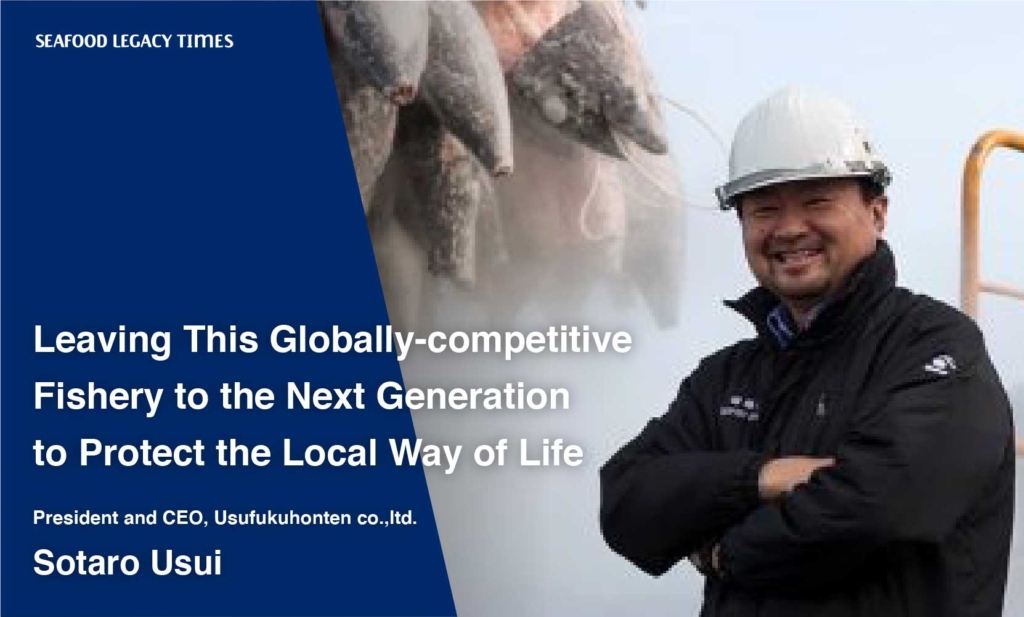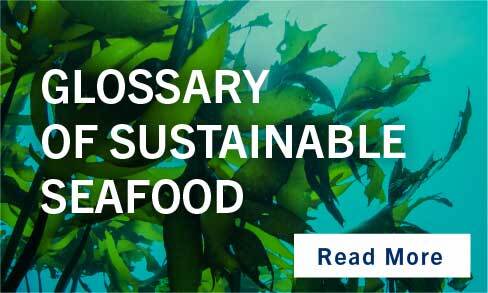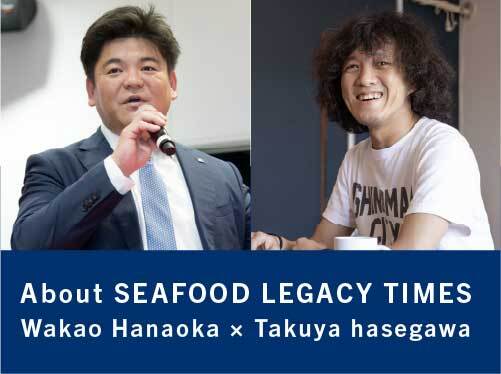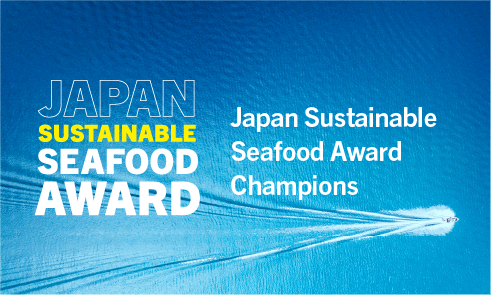

Yukinori Shitautsubo founded a seafood company in Hirono, a town at the northernmost tip of Iwate Prefecture, and aims to expand the Kita-Sanriku brand worldwide. Born the first son in a seafood processing company, he has seen firsthand the prosperity and decline of a fishing town, and he once worked as a salesman in an industry with no connection to seafood. But he returned to his hometown to start his own seafood company and run business.Now his business is expanding to abroad. How does Mr. Shitautsubo feel about the seafood industry in his hometown today?
In Part One, we ask Mr. Shitautsubo about his path before founding the company in Hirono, the full story on the “sea urchin ranch” that he sees as an ideal seafood model for the future, and the challenges of restorative sea urchin aquaculture such as traceability and ocean desertification along with their solutions.
Yukinori Shitautsubo
Born 1980 in Hirono, Iwate Prefecture. After graduating from university, I worked for a car dealer and life insurance company, then returned home. Started local seafood venture Hironoya Co. Ltd. in 2010. Soon after, Hirono was hit hard by the Great East Japan Earthquake. Set up strategic subsidiary Kita-Sanriku Factory Co. Ltd. in 2018 with the mission of creating a new future for the region and the seafood industry. Further, set up a local subsidiary in Melbourne, Australia, in 2023, expanding restorative aquaculture horizontally beyond Japan as a global company. 100 Japanese Breakout Achievers in Asahi Shimbun Publications magazine Aera (2014). 300 Outstanding Small and Medium Enterprises (2016). Companies Driving Regional Growth (2018). Tohoku New Business Council’s Tohoku Entrepreneur Award (2021). 3rd Place in ICC Summit Fukuoka 2023 Catapult Grand Prix (2023).
——Tell us about your path before founding a seafood company in Iwate Prefecture.
I was born the first son in a seafood processing company in Hirono, Iwate Prefecture and grew up right near the sea. My family has been in the seafood industry for over 130 years. When I was young, the ocean was still productive, so business was good, and we lived a comfortable life. But the region’s seafood industry gradually began to stagnate, and when I was in middle school, our company’s business slumped, suddenly forcing us into poverty.
Hirono had drawn its prosperity from the once bountiful sea, and seeing the town become bleak as it declined in population made me think that there was no way to make a living in the seafood industry in this region, so I went to university and then worked at a major car company and an insurance company.
But while I was at it, my father fell ill in 2010, which brought me back to Hirono. What I saw on my return was completey changed appearanceof a once bountiful sea. Though I had previously rejected the seafood industry as a future option, I decided to take on the personal challenge of restoring the sea to productivity and established the company Hironoya. We started out selling seaweed, primarily wakame.
Then, in 2018, I established the strategic subsidiary Kita-Sanriku Factory to deliver sustainable Kita-Sanriku seafood worldwide. This year, in April 2023, I set up the local subsidiary KSF Australia (KSF: Kita-Sanriku Factory) to expand into Australia.
——Tell us about the sea urchin that is the cornerstone of your business. Why did you focus on sea urchins?
Hirono, Iwate Prefecture, is a small town of just under 14,000 people, but it has a very unique fishery in the world. I call it a “sea urchin ranch” as this truly is a super-sustainable fishery. The photo below shows that trenches have been dug lengthwise and crosswise in a rocky area along the coast. This was carved out of the rock in a shoal 55 years ago at the decision of fishermen and the head of the local cooperative at the time. Wild seaweed like kombu and wakame drift into this structure from the open sea and accumulate naturally, resulting in thick vegetation.
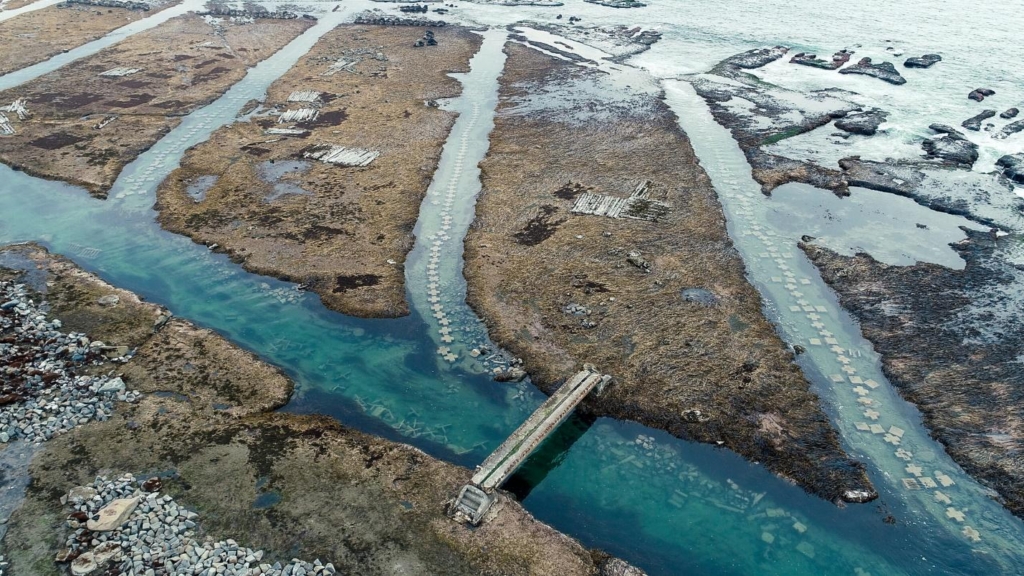 “Sea urchin ranch” constructed in Hirono, Iwate Prefecture 55 years ago
“Sea urchin ranch” constructed in Hirono, Iwate Prefecture 55 years ago
The sea urchin ranch (growth trenches) is about 18 kilometers from north to south with 178 trenches dug toward the open sea. Wild seaweed drifts in here from the open sea and accumulates. Juvenile sea urchins hatched on land and raised for one year in water tanks are released, and after two to three years, sea urchins that have grown to around six centimeters in natural fisheries are transferred from the open sea to the ranch. In the final year, they are fed plenty of wild kombu and seaweed and shipped. Hirono’s sea urchin ranch, with this growth cycle from years one through four, is, I believe, a true legacy of seafood production. We still have this structure built 55 years ago, and thanks to this fishery, Hirono has by far the best landings of kita-murasaki sea urchin in all of Honshu!
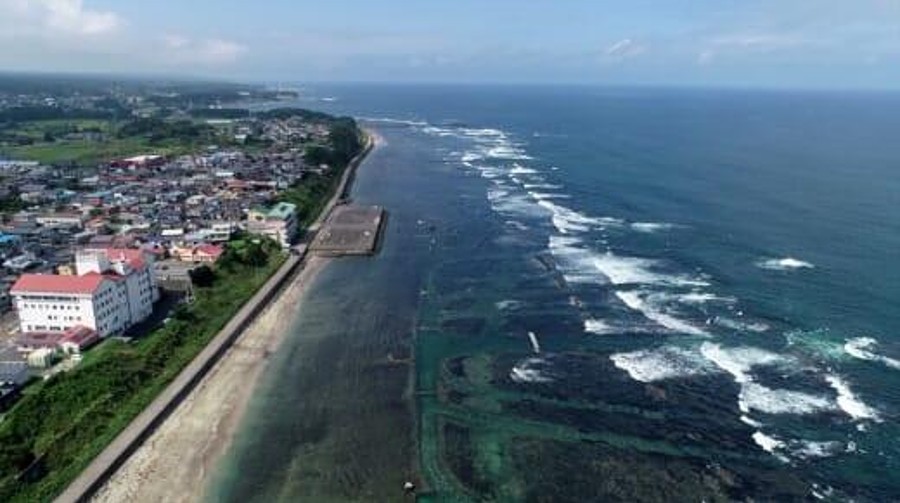
——What made you decide to deliver sea urchin internationally?
I returned to Hirono in 2010, setting up my company in May, and in March of the following year, we had the Great East Japan Earthquake. My first thought was, “It’s all over.” Yet, while I was planning my comeback in the year after the earthquake, I found the photo below. It was taken around 70 years ago in my great-grandfather’s generation and shows my great-grandfather and grandfather. What you see in the front is all abalone.
 Shitautsubo abalone drying facility run by Mr. Shitautsubo’s great-grandfather
Shitautsubo abalone drying facility run by Mr. Shitautsubo’s great-grandfather
The Ezo abalone catch was plentiful in Sanriku back then, and my great-grandfather was the biggest processor in Sanriku, drying up to 2,000 tons of Ezo abalone a year, which he exported entirely to Hong Kong. My grandfather told me that retail value at the time came to about ¥700 million, ¥4 billion at today’s prices. In an era without airplanes or other infrastructure, my great-grandfather went to Hong Kong himself by boat to deal with local merchants, I am told. He collected the proceeds from the merchants, returned to Japan, converted the money, returned to Hirono (formerly Taneichi) by truck, and paid the producers. Hearing that, I thought, “Now this is a global business that can be done locally!” and resolved that I, too, would aim for the world.
But the sea around Hirono today is not as productive as it was back then. Due to ocean desertification, the seaweed that abalone eats does not grow, and the abalone catch has fallen to 1/20 in the last 70 years. The seafood industry’s greatest mistake to date may well have been the creation of an economy based on capitalism that did not protect what should have been protected, depleting and exporting plentiful resources instead of managing them.
The seafood industry has many challenges in addition to global warming and resource management, including false designations of origin, a declining workforce due to aging, slumping seafood prices, Japanese people’s shift away from seafood consumption, and an extremely slow digital transformation. I also feel that we need generation change in order to reform the seafood industry and break out of the status quo by utilizing new and innovative technologies.
——What kinds of challenges have you become aware of in the sea urchin business?
One challenge, I believe, is the circulation of goods for which we do not know when, by whom, and where they were caught. Currently, there are almost no sea urchin products in Japan for which we are able to ensure traceability. On the other hand, our company’s the sea urchin package shows the catch location as “Hirono(See the photo below).” We also now put a QR code next to our logo so you can find out when by whom and where the product was caught.
 Hirono Sea Urchin Ranch Four-Year Sea Urchin produced and sold by Kita-Sanriku Factory
Hirono Sea Urchin Ranch Four-Year Sea Urchin produced and sold by Kita-Sanriku Factory
I believe that what will be demanded of the seafood industry in the future is honesty. That is why we developed a sea urchin traceability system in collaboration with Tomifuji Manufacturing, the creators of Japan’s first tuna traceability system. As a result, we are able to prove our place of origin not just in the Japanese market but also when exporting products to other countries like Singapore, Taiwan, Thailand, and Vietnam. Ensuring proper traceability in this way will link Japanese regions with the world, thereby protecting the Japanese brand.
Moreover, our greatest challenge is the ocean desertification that occurs when sea urchins eat away seaweed. With the rise in sea temperature, sea urchins have become more active and are consuming seaweed root and branch. The “urchin” in “sea urchin” suggests the notion of a misbehaved child. They eat everything in front of them. If not managed carefully, they can even become a harmful pest. Thinking back now 30 years ago to when I was in middle school, wild seaweed like kombu and wakame grew in such thick abundance that we had a hard time reaching the seafloor. Under current conditions, as in the photo below, there is no seaweed at all.
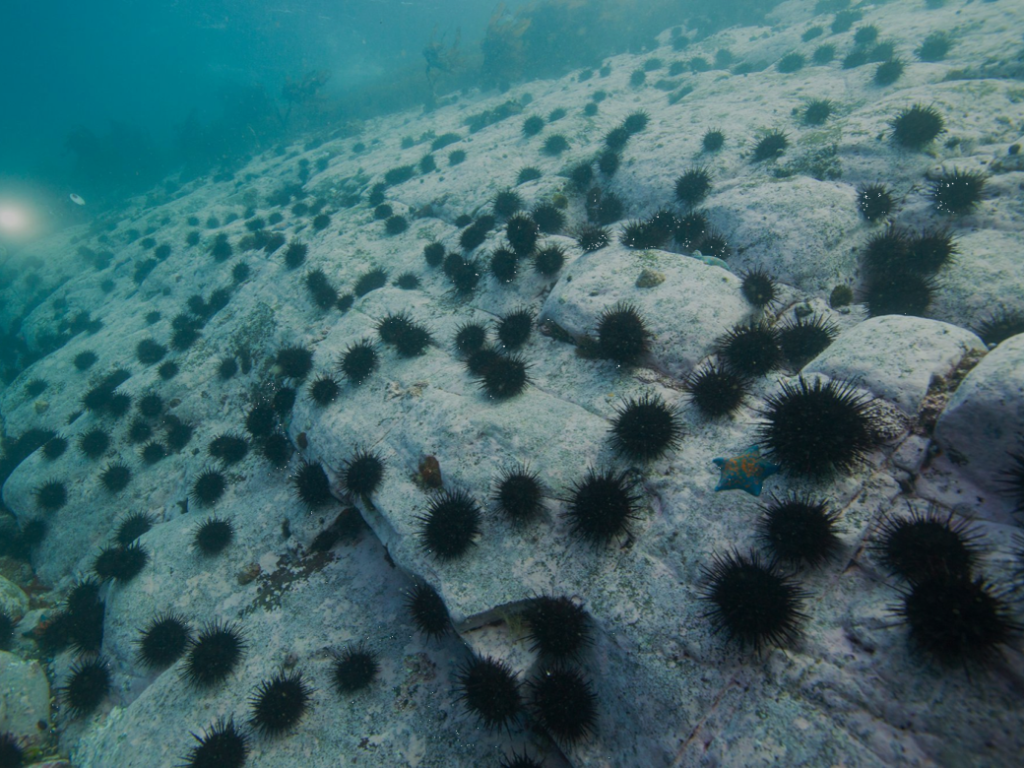 Kita-Sanriku sea in the midst of ocean desertification
Kita-Sanriku sea in the midst of ocean desertification
I want to put my life into restoring the seaweed that we have lost. In actually dealing with sea urchin, I have found that the quality is getting worse every year. Meat content is reduced, and yields (percentage of edible part that can be sold) are poor. These days, it would be no exaggeration to say that the more sea urchins are harvested, the more losses we will make. Under current conditions, it is simply impossible to return to previous business volumes.
Furthermore, warm and cold currents come together in the sea off Sanriku, forming one of the best fisheries in the world. However, due to global warming, sea temperatures are rising yearly, sea urchin incubation and spawning times are occurring earlier, and sea urchin season has increased considerably compared to the last several decades. I therefore created a new project centered on restoring sea urchin stocks and regenerating seaweed beds and to prevent the collapse of the local seafood industry over the long term, I started making regular visits to Hokkaido University as part of our research in 2016.
Original Japanese text: Shino Kawasaki




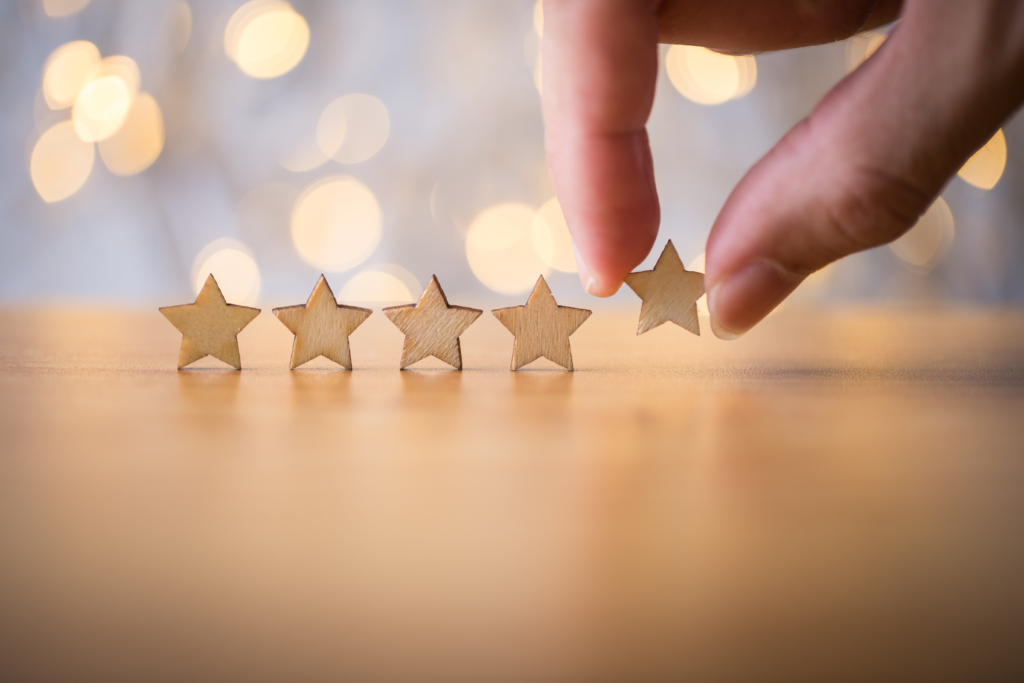




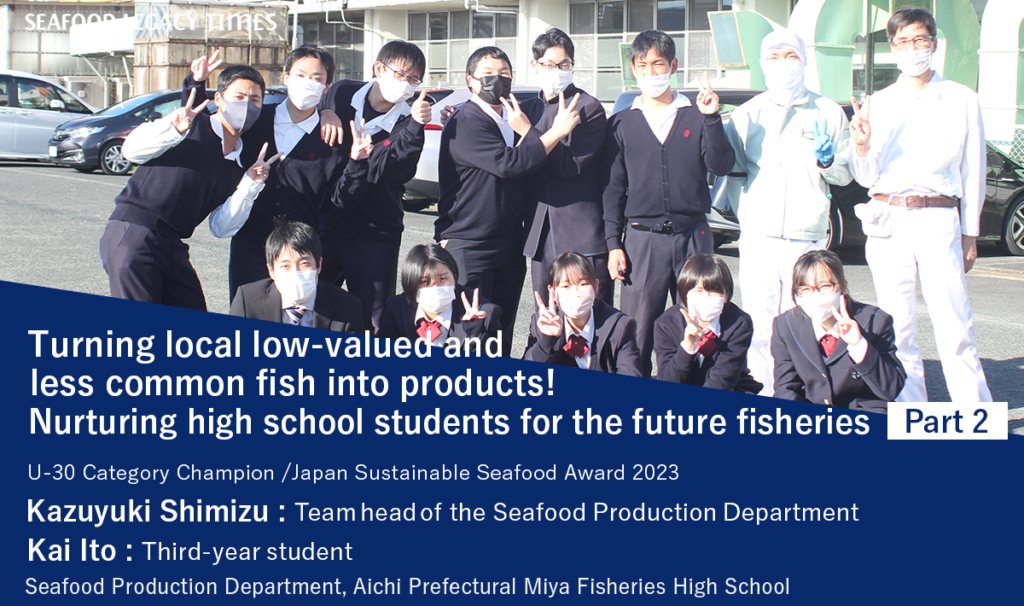
-1024x606.png)


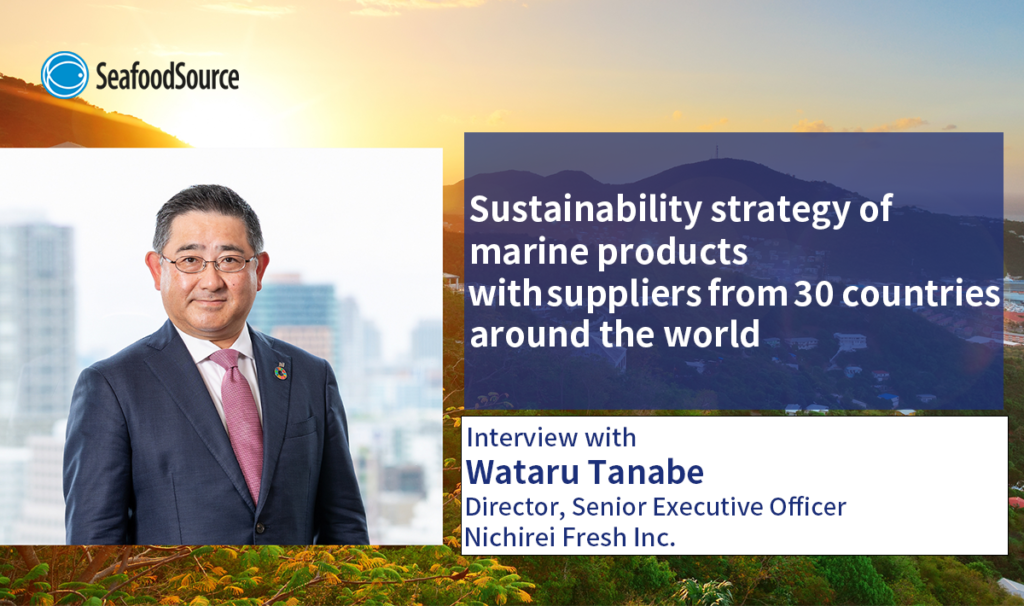
_-1024x606.png)

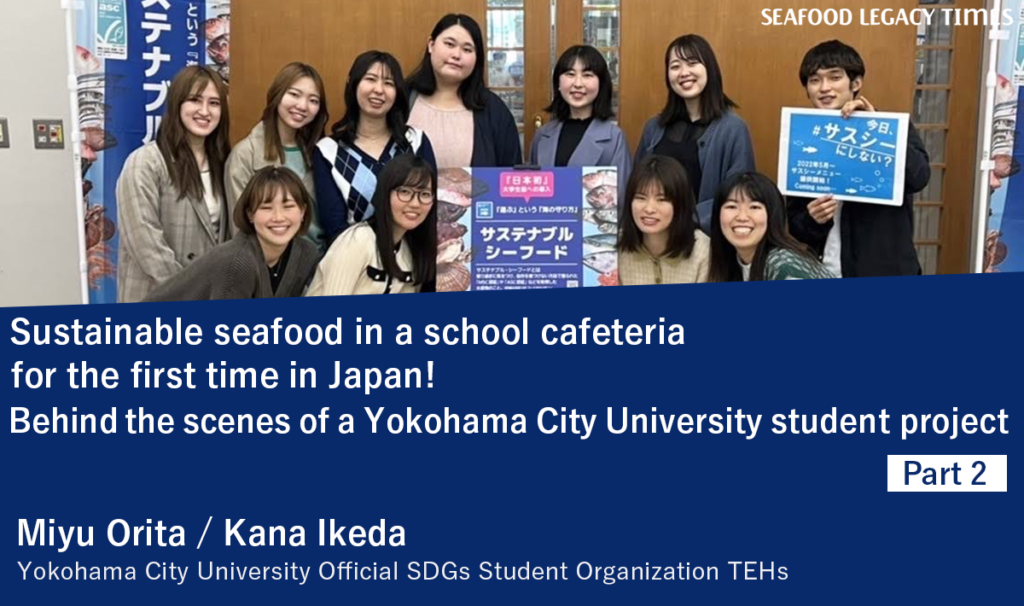
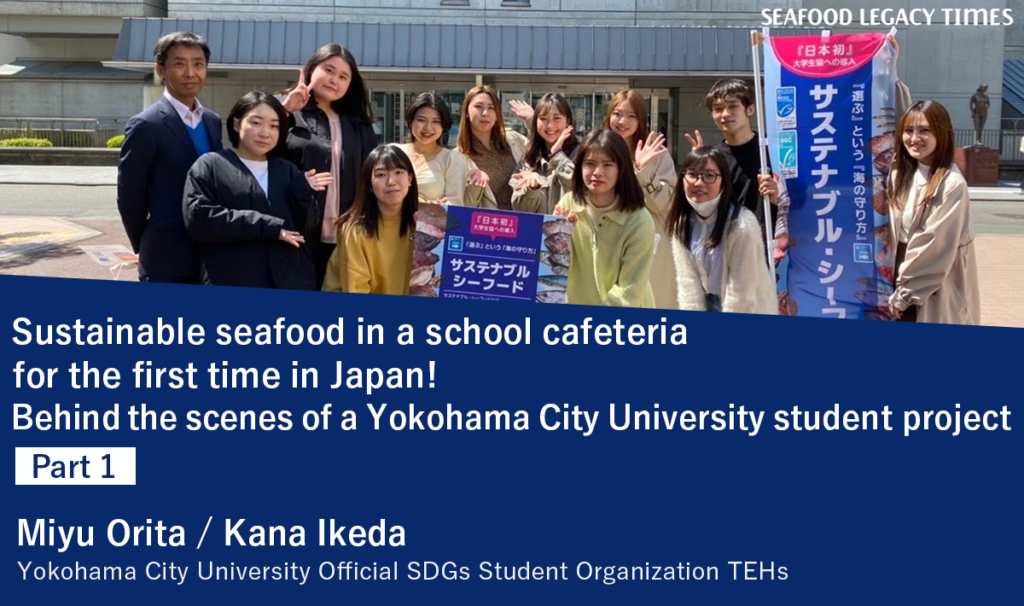



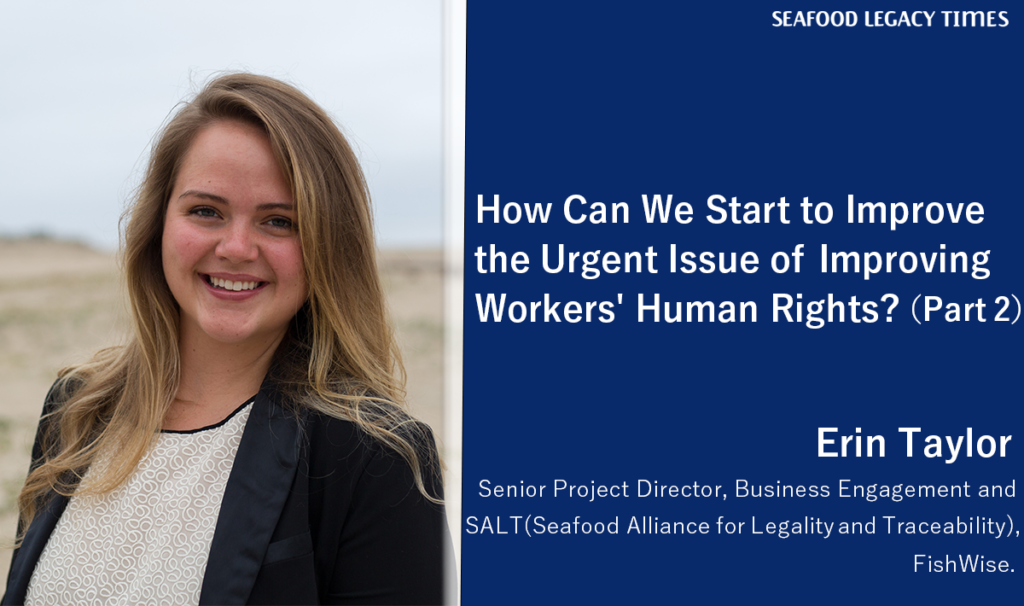
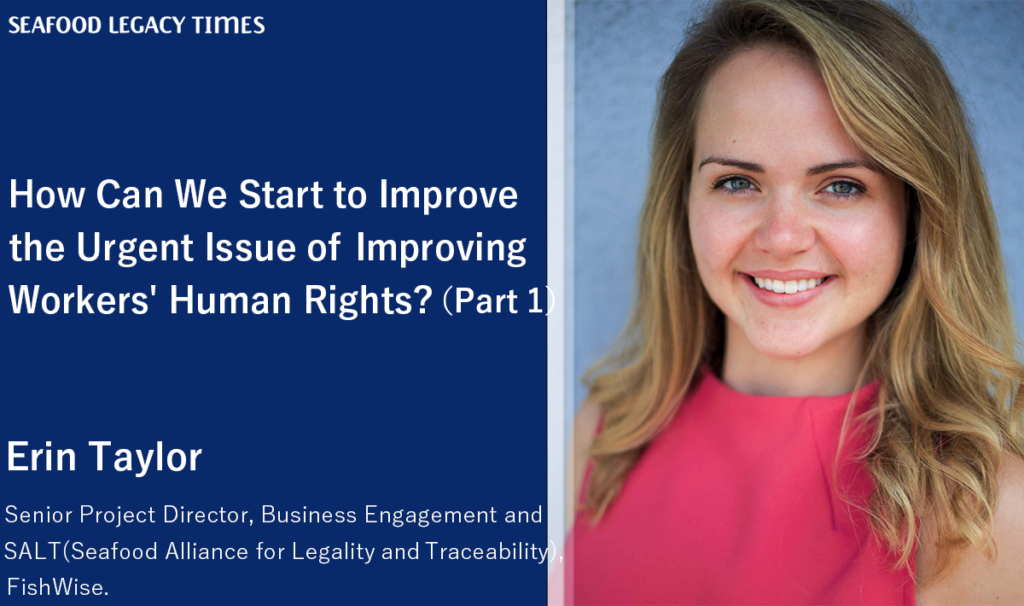
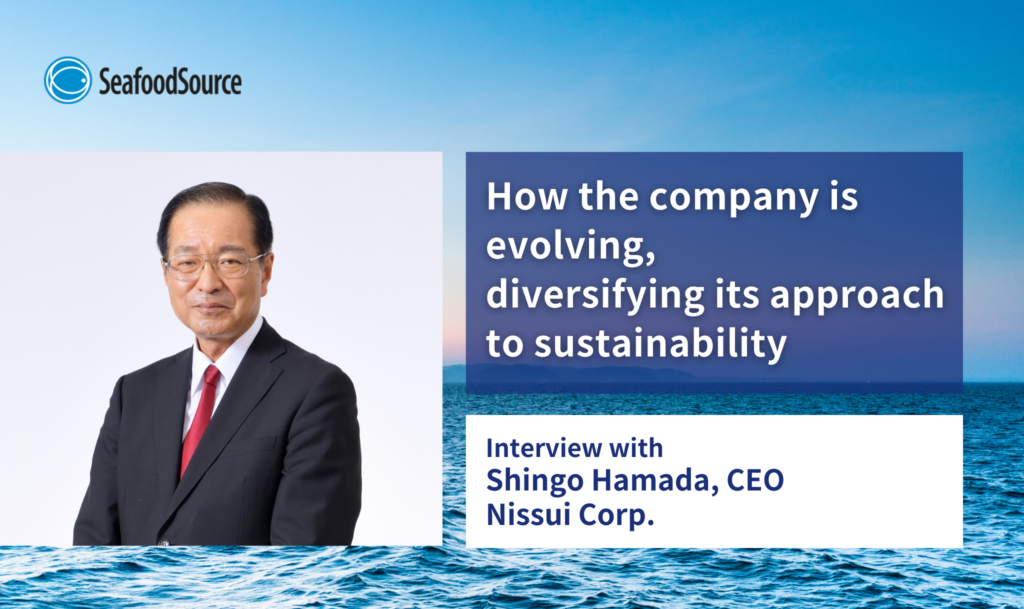




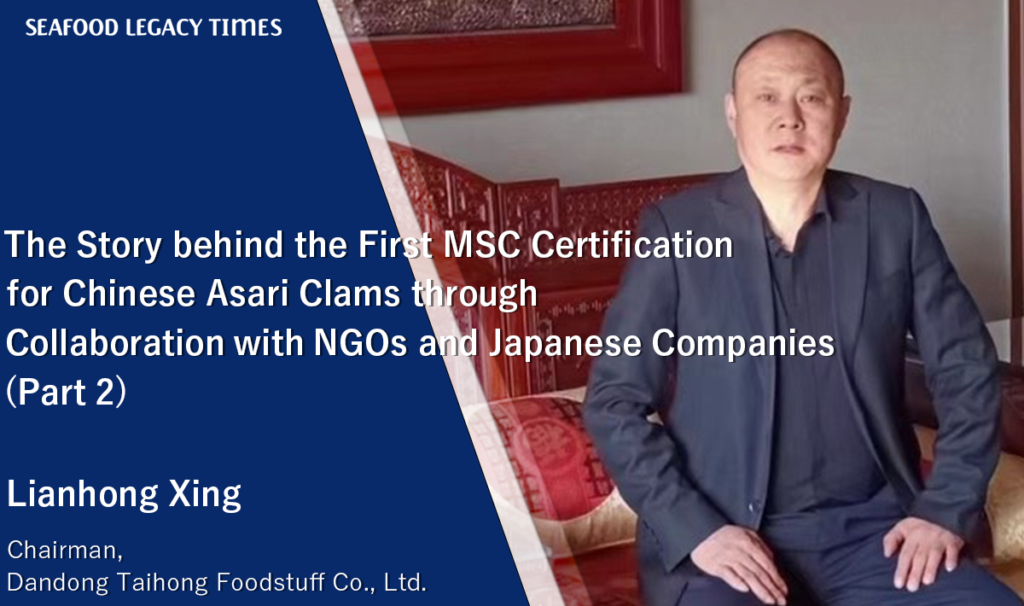
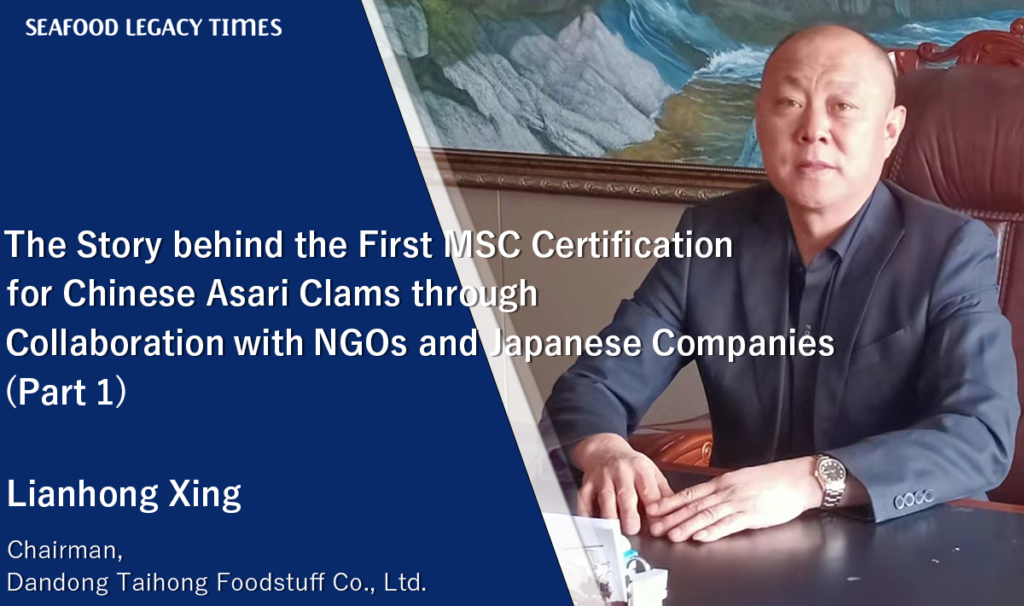

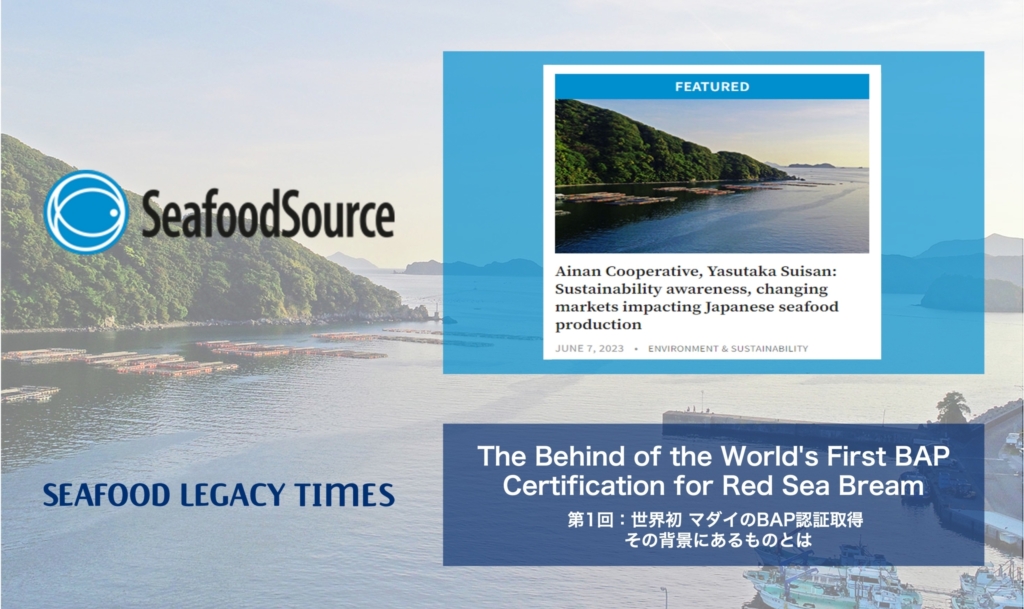

1_修正524-1024x606.png)


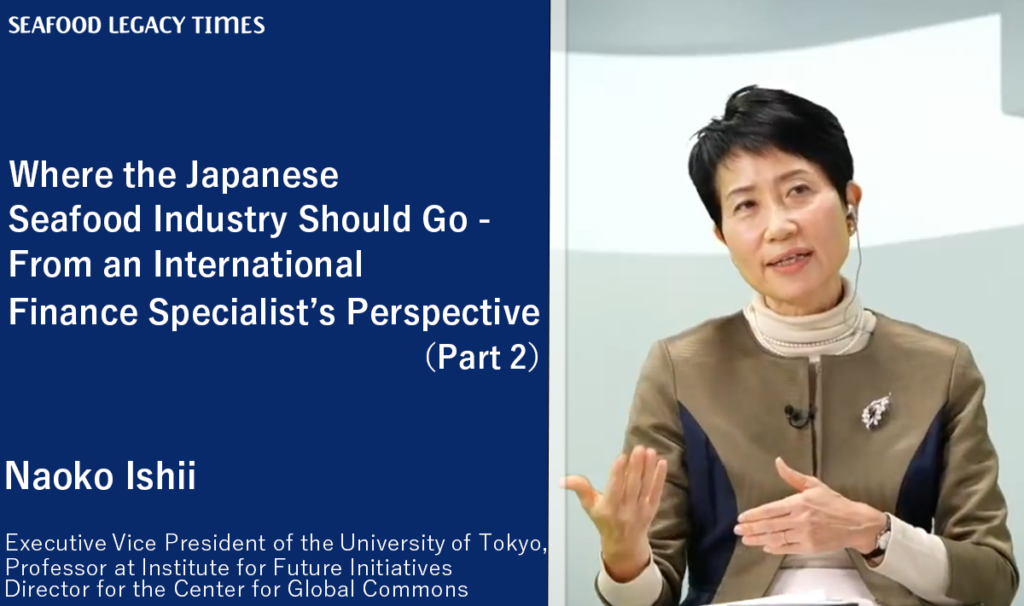







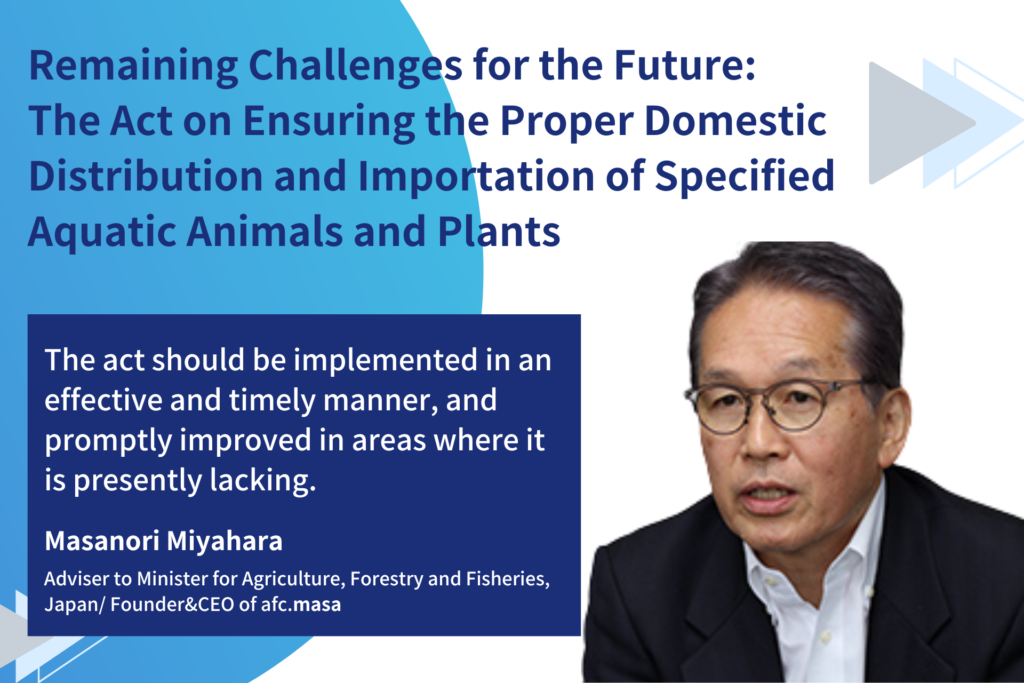
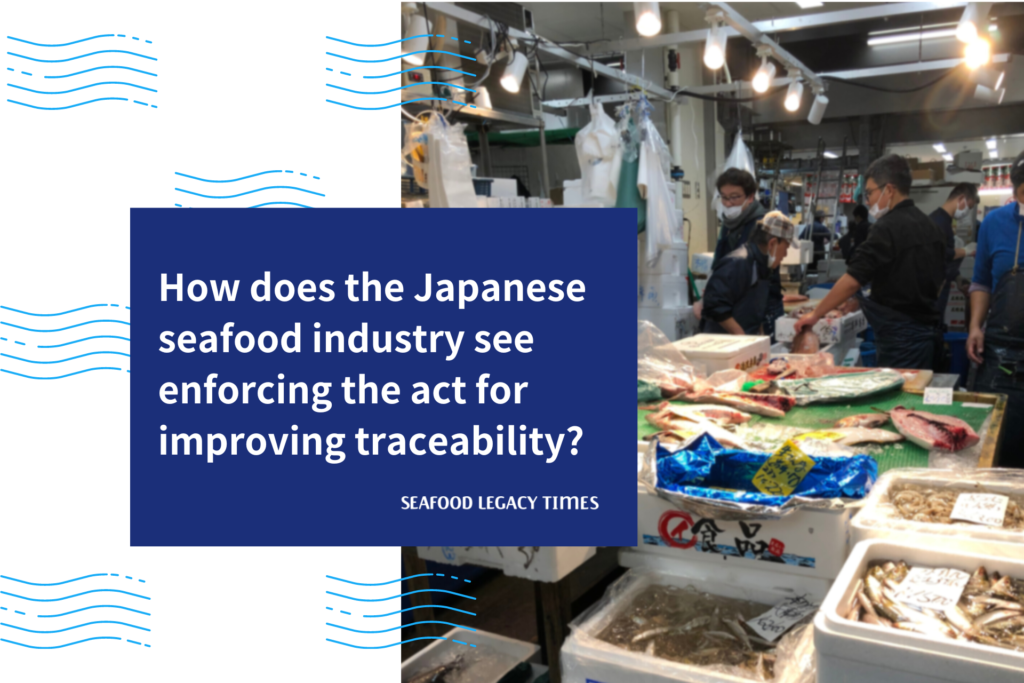



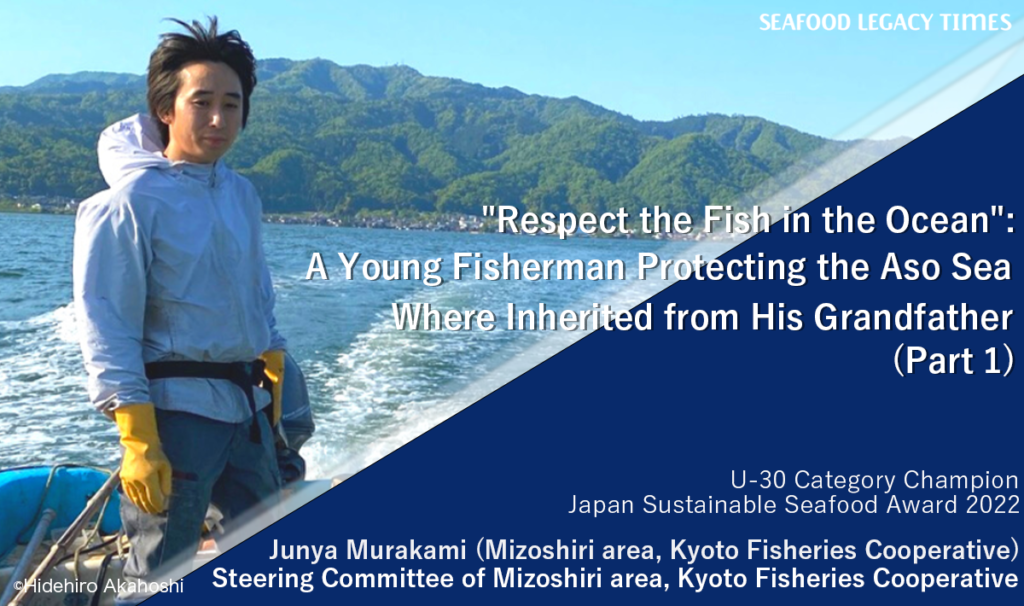
.2-1024x606.png)
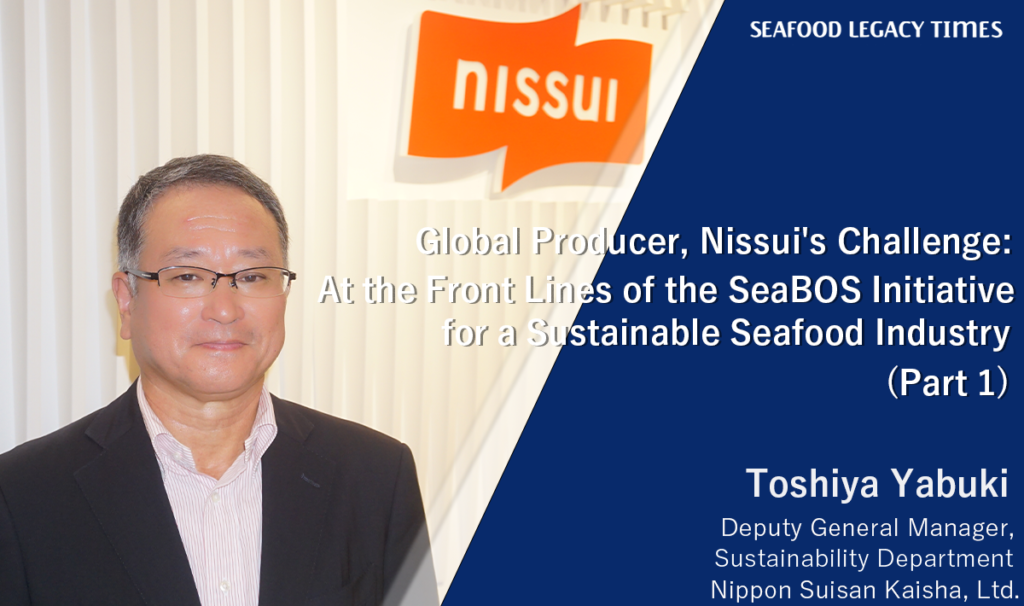
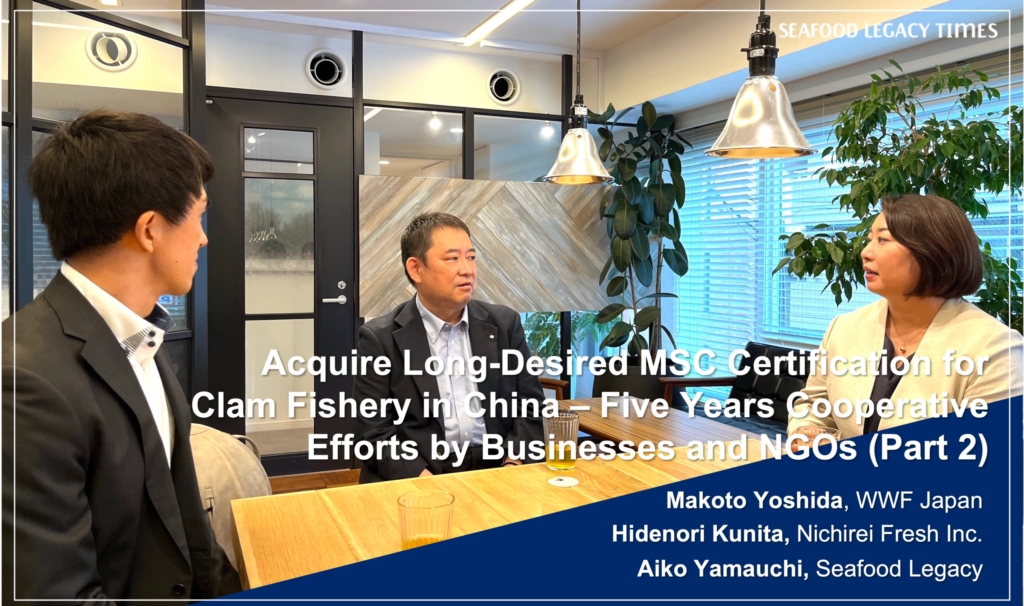
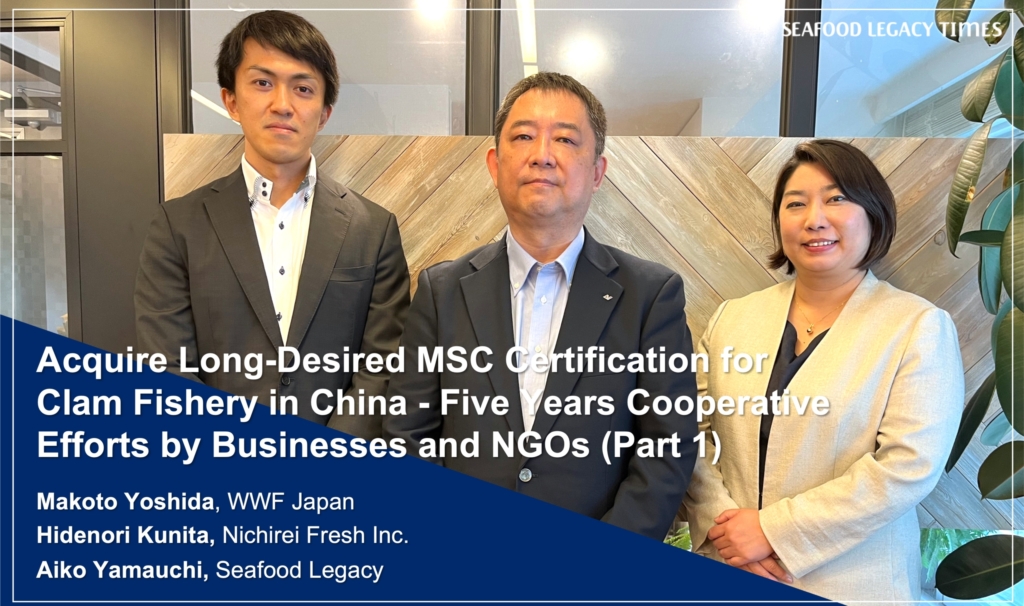






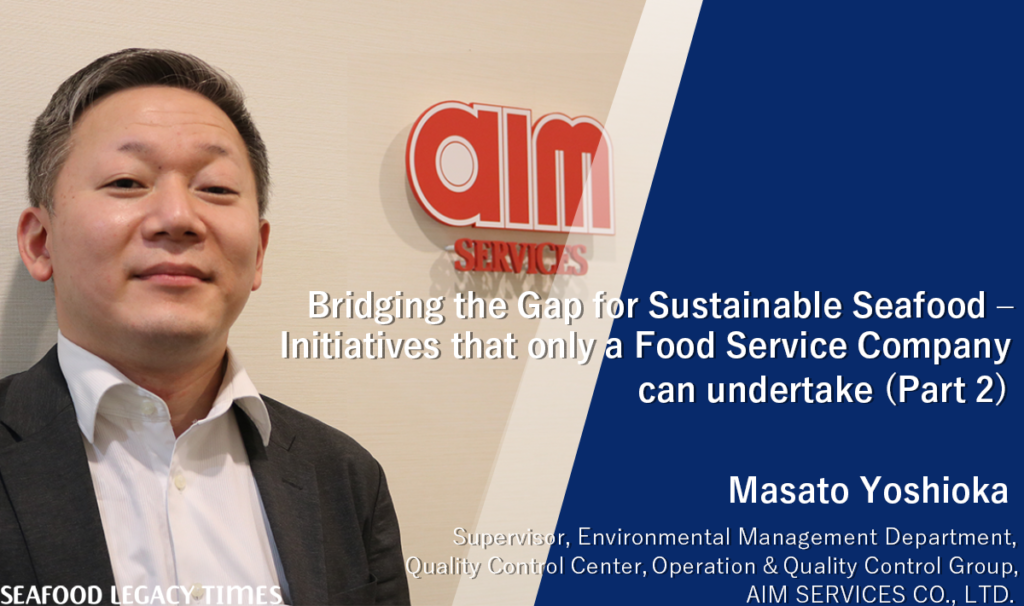
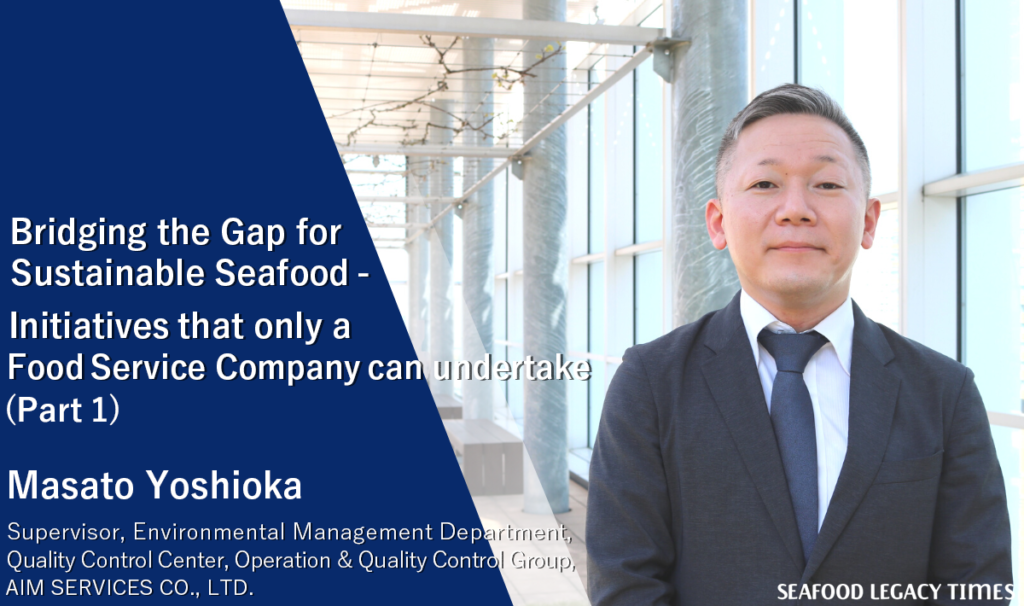
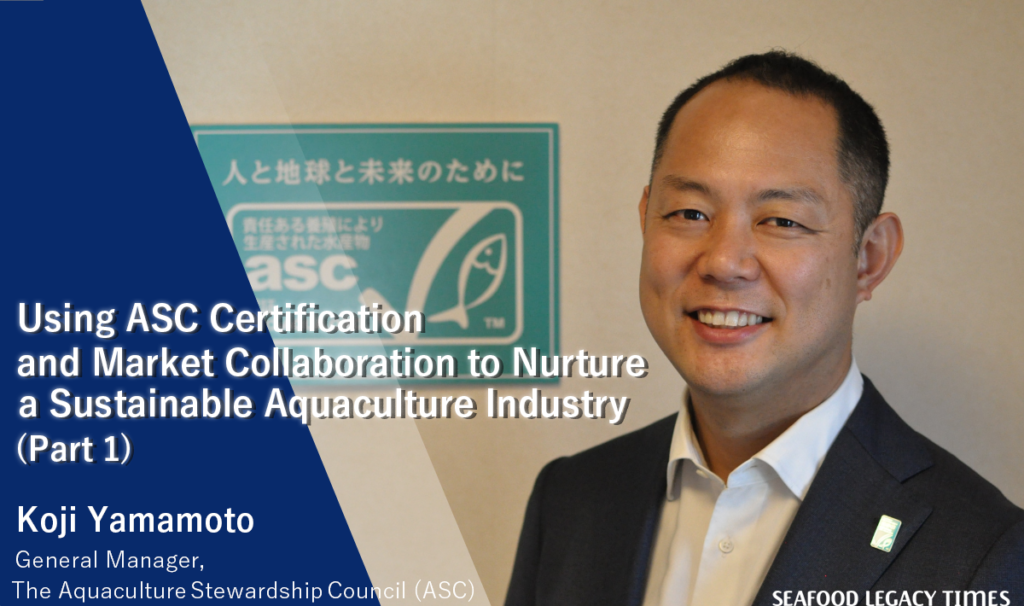
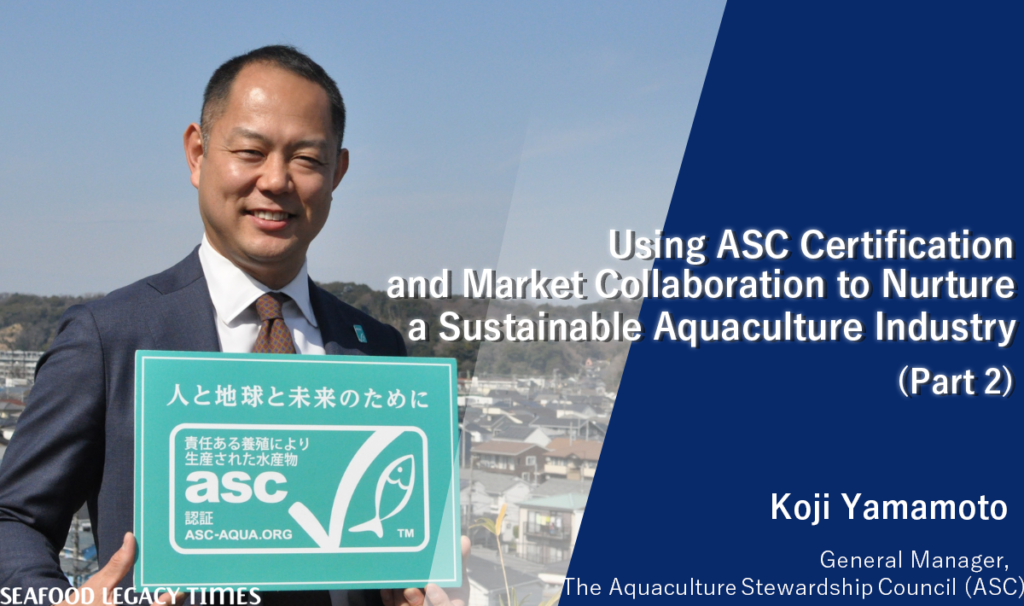
2-1024x606.png)
-1-1024x606.png)
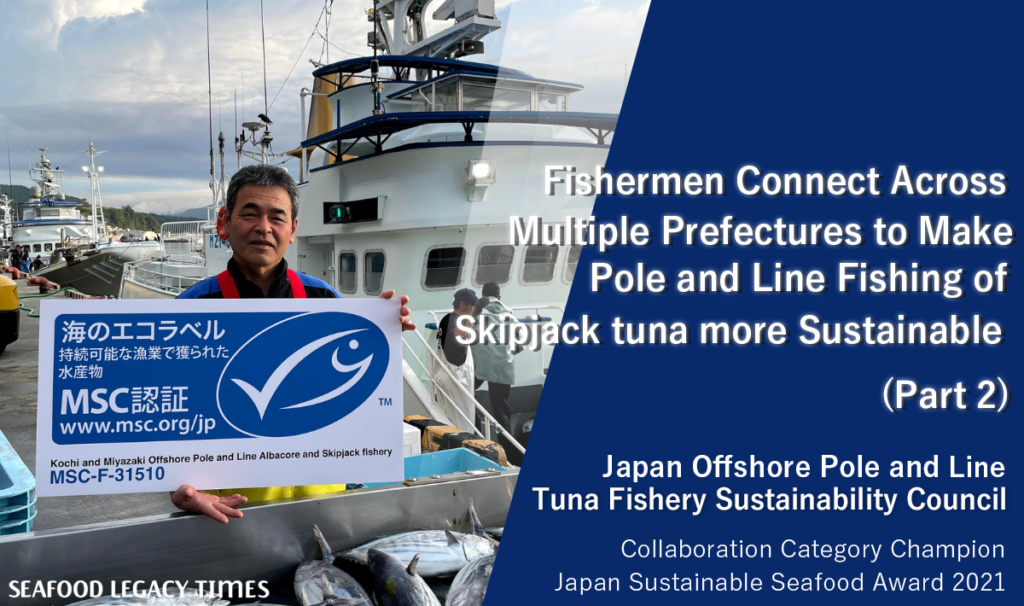
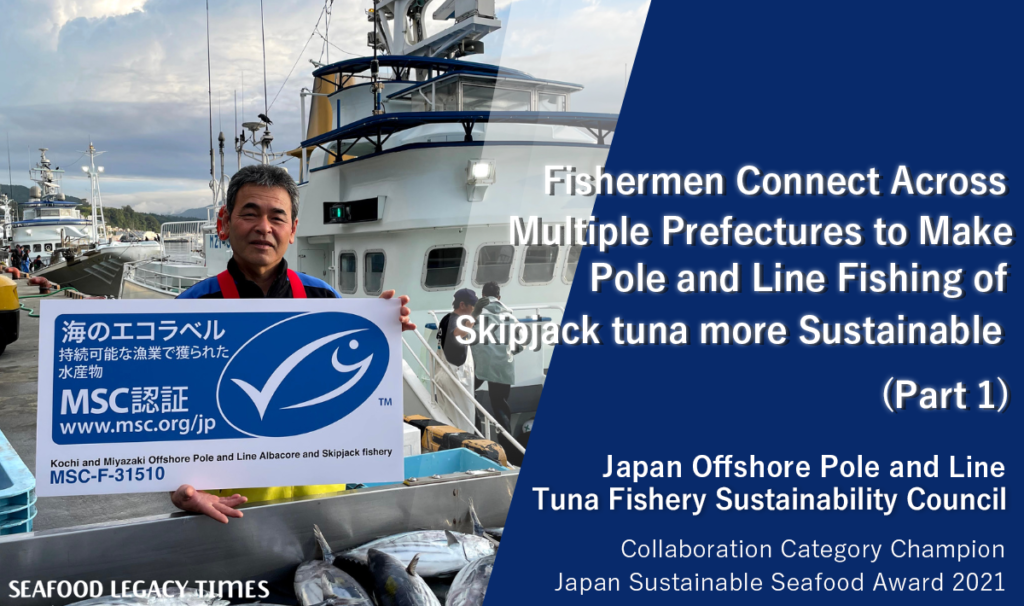
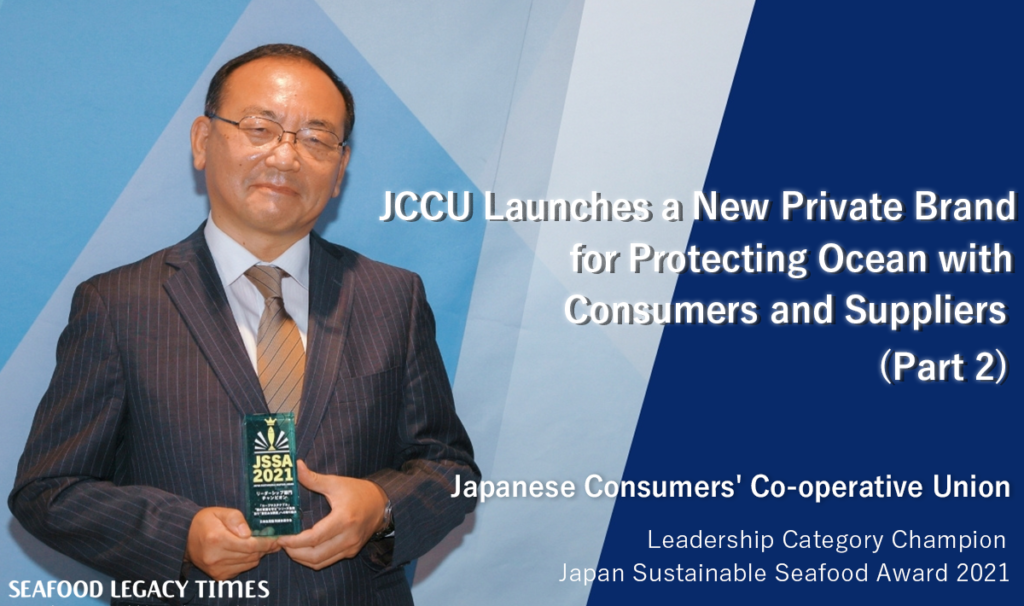
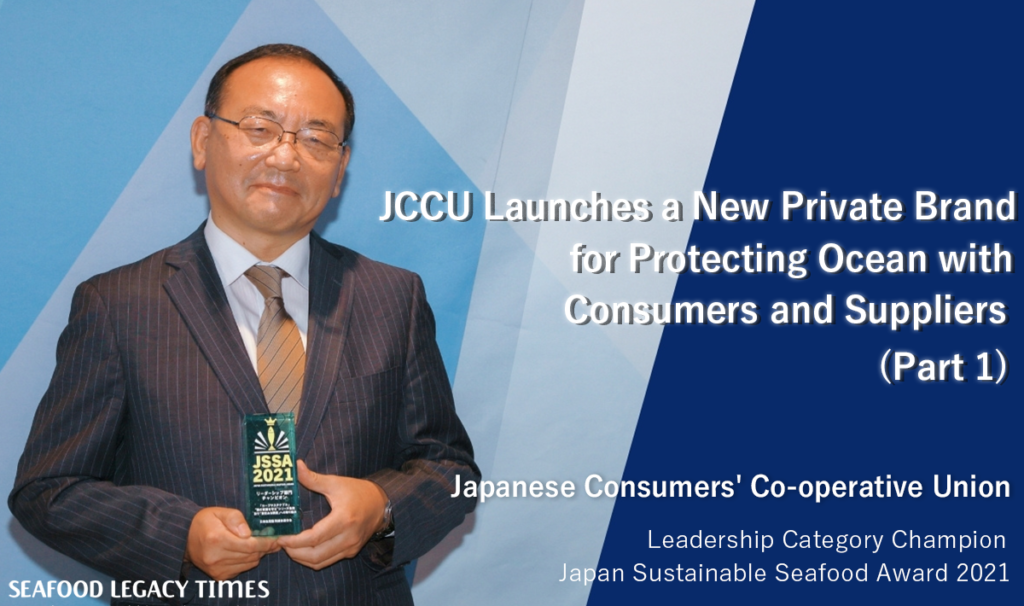
Part2-1024x606.png)
Part1-1024x606.png)
